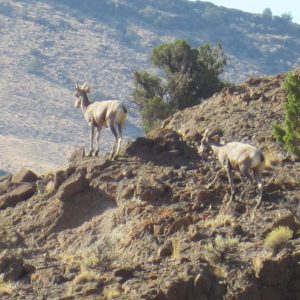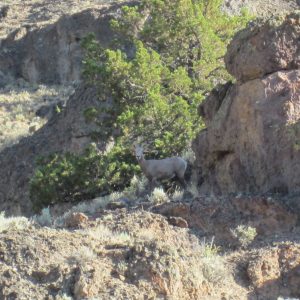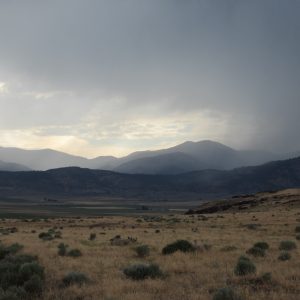
Encountering Sage-grouse in the Trout Creek Mountains after the Holloway Fire
The past month has been a busy one, a tale of random pasture sampling, ES&R trend plots, and rattlesnakes oh my! The story revolves around the infamous Holloway fire which burned up half a million acres of desert in several BLM districts including parts of Oregon and Nevada. The scale of this fire has been hard to comprehend, disrupting the livelihood of many hardworking and friendly ranchers. MIle after mile of fence was destroyed, plant diversity in the low elevations of the Trout Creek Mountains was severely diminished, and much wildlife habitat for sage-grouse was destroyed. But, there is hope…
Enter Burns District BLM. This hardworking organization has put together a crew of legends, and legendary hard-working interns to monitor and restore the fire which altered so much on that faithful July in 2012. This team has put together and implemented plans which could forever alter how the tale of the Holloway fire in the history books. Drill-seeding was conducted, plots were established, and revised grazing management is in the works. Even sage-grouse tip their beak in the presence of this crew. Some say this crew broke the record for trend-site monitoring in a single day, but these whispers remained rumors until the crew gloriously returned from the BLM bunkhouse in Fields, Oregon on August 7th, 2013.

UTV we used to monitor in the Trout Creek Mountains
With milkshakes in toe, the crew walked with their heads held high, and their monitoring data stacked to the height of even the highest cubicles. Many jaws dropped, and cowboy hats were tipped. The rumors were true, after 5 weeks of staying at the Fields bunkhouse, the ES&R monitoring crew comprised of 2 CLM Interns and one BLM hero had accomplished what no other ES&R crew had been able to do before; reached legendary status.
Random sampling was conducted on 8 pastures in the burn with up to 20 points per pasture. Roads were few and far between, even up cliffs, and cold mountain slopes. Had it not been for the training and dedication of the CLM interns, doubt arises as to whether or not it could have been done. Driving 30 to 60 miles off road everyday for 5 weeks, starting work at 5:00am everyday, hiking unimaginable formidable terrain, establishing and reading endless trend plots, the job was done and the interns emerged from the town of Fields which has a permanent population of roughly 9 residents.
A celebration expected from even the most veteran of BLM workers but no, the interns buckled down and kept working, entering data and creating maps, not even stopping to reflect on the accomplishments of the past month… until now.

Reflecting after a hard day of monitoring the mountains
Dan Mayer: Burns District BLM, Oregon


























